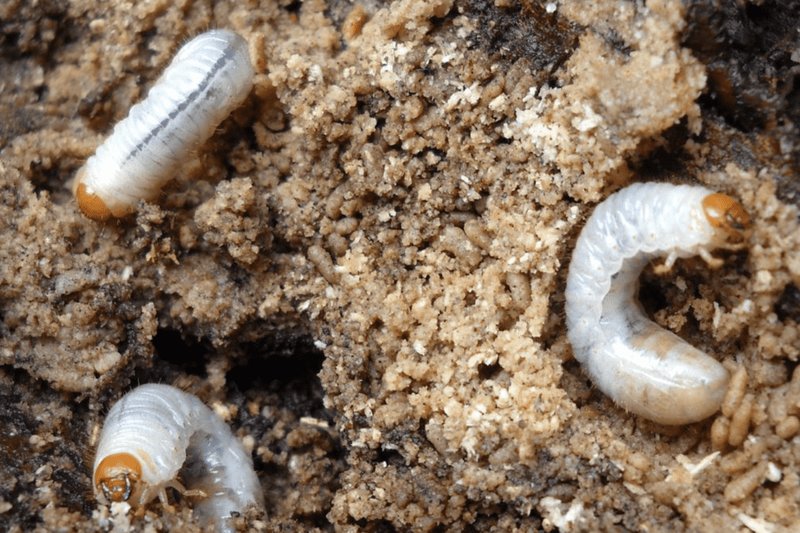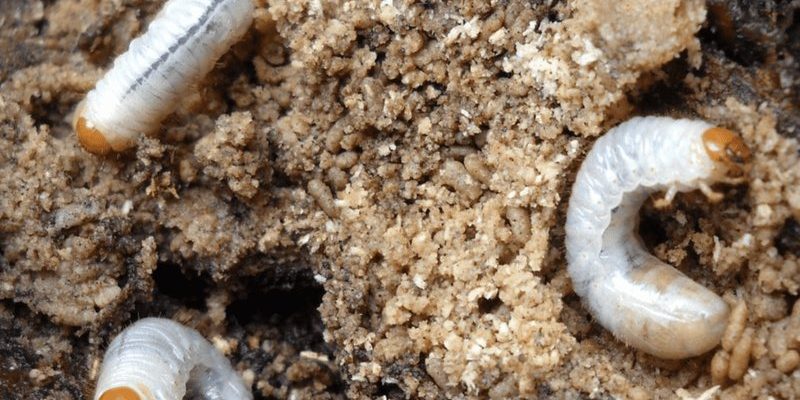
Grub worms, which are the larvae of various beetles, can wreak havoc on your grass, leading to brown patches and even dead areas if left unchecked. However, finding them doesn’t always mean you have to get your hands dirty. In this guide, I’ll share some effective methods for identifying grub worms without digging, making it easier for you to keep your lawn healthy.
What Are Grub Worms?
Let’s start with the basics. Grub worms are the larval stage of scarab beetles, like the Japanese beetle or the June bug. These little guys live underground and feed on the roots of your grass. If you’re wondering why your lawn is looking less than stellar, these tiny pests could be to blame.
You might be surprised to learn that they can vary in size from about half an inch to over an inch long. They usually have a C-shaped body and can be white or light brown, depending on their type. Just picture a little caterpillar curled up in the soil, munching away at the roots of your beloved grass while you’re blissfully unaware.
Identifying grub worms early on can save you from a lot of frustration down the road. So, rather than diving straight into your lawn with a shovel, let’s explore some signs to look for.
Signs of Grub Worm Infestation
You might be wondering how to tell if grub worms are causing trouble in your yard without going full-on excavation mode. Fortunately, there are several visible signs that can clue you in.
- Brown patches: These are often the first sign of trouble. If you notice irregular brown spots on your lawn, it might be time to investigate further.
- Soft or spongy soil: When you walk on your grass, does it feel a bit mushy? That’s a classic sign of grubs disrupting the roots beneath.
- Bird activity: Have you noticed birds pecking at your lawn more than usual? They might be looking for a tasty grub snack!
- Increased insect activity: Other insects hanging around or digging in your yard could signal that grubs are present, as they’re often indicators of a larger pest problem.
These signs are like breadcrumbs leading you to what could be a bigger issue. Think of them as early warning signals that it might be time to take some action.
Checking for Grub Worms: The Roll Test
One of the easiest ways to check for grub worms without digging is through a method known as the roll test. Here’s how it works:
1. Water your lawn: Give your grass a good soak the day before you plan to check for grubs. This will make the soil softer and allow for easier inspection.
2. Pick a section: Choose a small area of your lawn—about a square foot works well.
3. Roll back the grass: Gently lift the turf as if you were rolling back a carpet.
If you find a bunch of grubs underneath, you’ve hit the jackpot (not in a good way)! If not, you can simply roll it back in place, and your lawn will be no worse for the wear.
Using a Soil Probe
If you’re looking for a slightly more sophisticated approach than the roll test, consider using a soil probe. This handy tool lets you check for grub worms without disturbing your lawn too much. Here’s how to do it:
1. Get a soil probe: You can find one at most garden centers or online. It looks like a long metal stick with a handle and a sharp end.
2. Choose a spot: Similar to the previous method, pick a section of your lawn to examine.
3. Insert the probe: Push the probe into the ground, twisting it as you go to pull up some soil.
4. Examine the soil: If you pull up a sample and spot any grubs, that’s a sure sign you need to take action!
A soil probe is a great way to keep your lawn intact while checking for those hidden pests. It’s like being a secret agent for your yard!
Assessing Lawn Damage
Another way to identify grub worms without digging is by assessing the overall damage to your lawn. You might not see the grubs directly, but their impact can be pretty clear. Here’s what to look for:
– Discoloration: If your grass is turning brown or yellow, especially in patches, grubs may be at work beneath the surface.
– Dead patches: Areas where the grass has completely died off are a strong indicator of grub activity. When roots are destroyed, so is the grass above.
– Easy to pull up grass: If you can easily pull up grass in certain sections, that’s a red flag. It means the roots are dying, likely due to grubs munching on them.
Taking a closer look at your lawn can reveal a lot about what might be going on underground. It’s like a treasure hunt for lawn health!
When to Seek Professional Help
If you’ve identified signs of grubs but aren’t sure how to proceed, it might be best to call in a professional. Here are a few reasons why seeking help is a smart move:
– Extensive damage: If your lawn has significant damage and you’re not equipped to handle it, professionals can assess the situation and recommend the best actions.
– Pest control methods: Experts have access to treatments that aren’t available to the average homeowner, providing more options for managing the problem.
– Long-term solutions: Professionals can help you develop a long-term plan for lawn health that tackles not just grubs but other potential pests too.
Sometimes, it’s best to let the experts handle things, especially when your beloved lawn is at stake.
Preventing Grub Worms
Once you’ve identified and dealt with any grub worm issues, it’s essential to think about prevention. Here are some effective strategies:
– Healthy lawn practices: Keep your grass healthy by mowing at the right height, watering deeply but infrequently, and fertilizing appropriately.
– Natural predators: Encourage birds, beneficial insects, and other natural predators to visit your yard. They can help keep grub populations in check.
– Timing: Apply preventative treatments in early spring or late summer, when grub eggs are laid. This proactive approach can stop grubs before they even begin!
Being proactive can save you from a lot of headaches later on. Think of it like a regular health check-up for your lawn!
In conclusion, identifying grub worms without digging is definitely possible with a little observation and the right techniques. From brown patches to checking for grub presence through methods like the roll test and soil probes, you can keep an eye on your lawn’s health. Remember, a healthy lawn starts with prevention. With these tips, you’ll be well on your way to a lush, vibrant yard that’s free from pesky pests. So grab a drink, take a stroll around your lawn, and keep those grub worms at bay!

